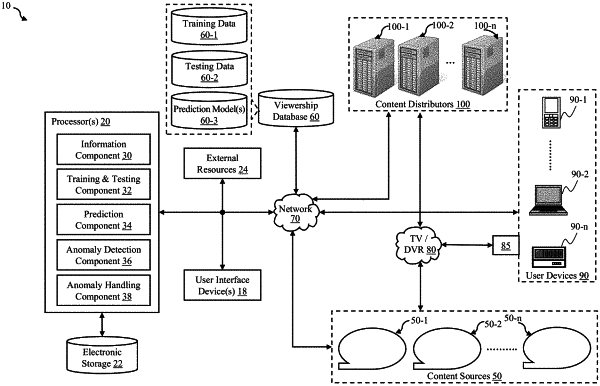| CPC H04N 21/251 (2013.01) [G06F 18/214 (2023.01); H04N 21/44204 (2013.01); H04N 21/4532 (2013.01); H04N 21/4662 (2013.01)] | 20 Claims |

|
1. A computer-implemented method for managing viewership data, the method comprising:
obtaining a first total amount of time that a first plurality of users is displayed a first set of content via a first plurality of content distributors during a plurality of past periods including a target period;
obtaining a second total amount of time that a second plurality of users is displayed a second set of content via a second plurality of content distributors during the plurality of past periods including the target period;
obtaining a first set of features associated with the display of the first set of content
obtaining a second set of features associated with the display of the second set of content;
predicting, via a trained model, a predicted first total amount of time that the first plurality of users would be displayed the first set of content during the target period based on the obtained first set of features associated with the first display of the first set of content and on the obtained first total amount of time that occurred during past periods that precede the target period;
predicting, via the trained model, a predicted second total amount of time that the second plurality of users would be displayed the second set of content during the target period based on the obtained second set of features associated with the display of the second set of content and on the obtained second total amount of time that occurred during the past periods that precede the target period;
comparing the obtained first total amount of time during the target period to the predicted first total amount of time and the obtained second total amount of time during the target period to the predicted second total amount of time;
detecting an anomaly based on at least one of the obtained first total amount of time during the target period deviating from the predicted first total amount of time or the obtained second total amount of time during the target period deviating from the predicted second total amount of time; and
alerting, based on the detection of the anomaly, to the anomaly.
|